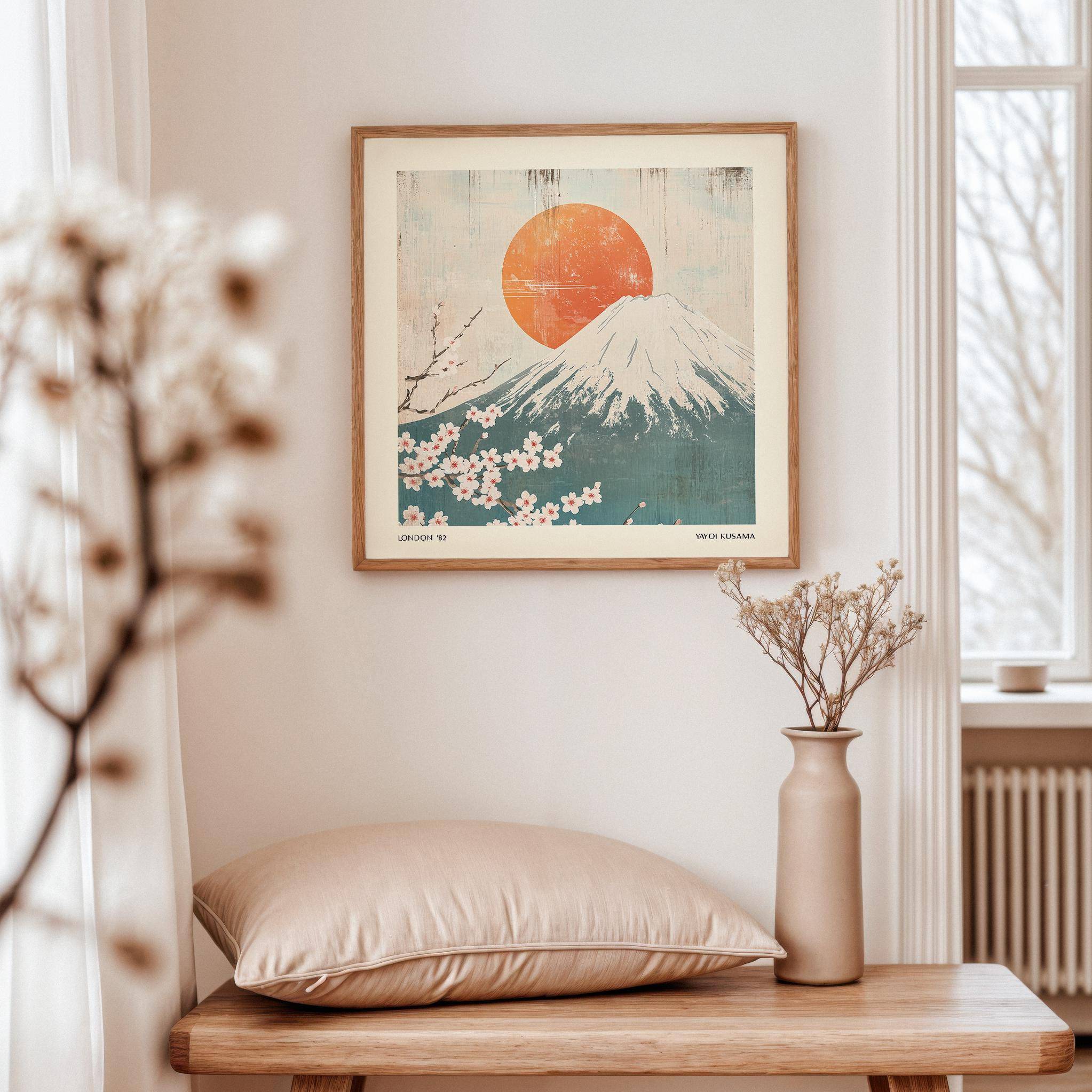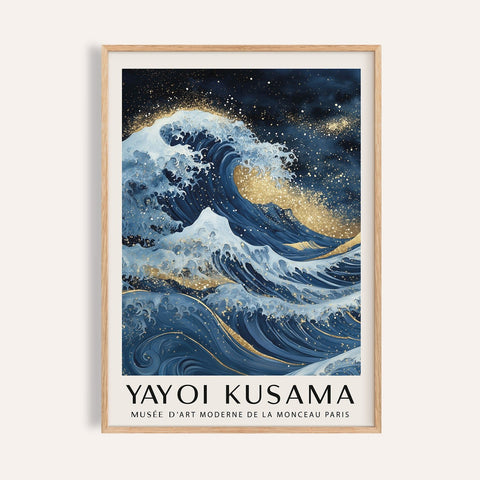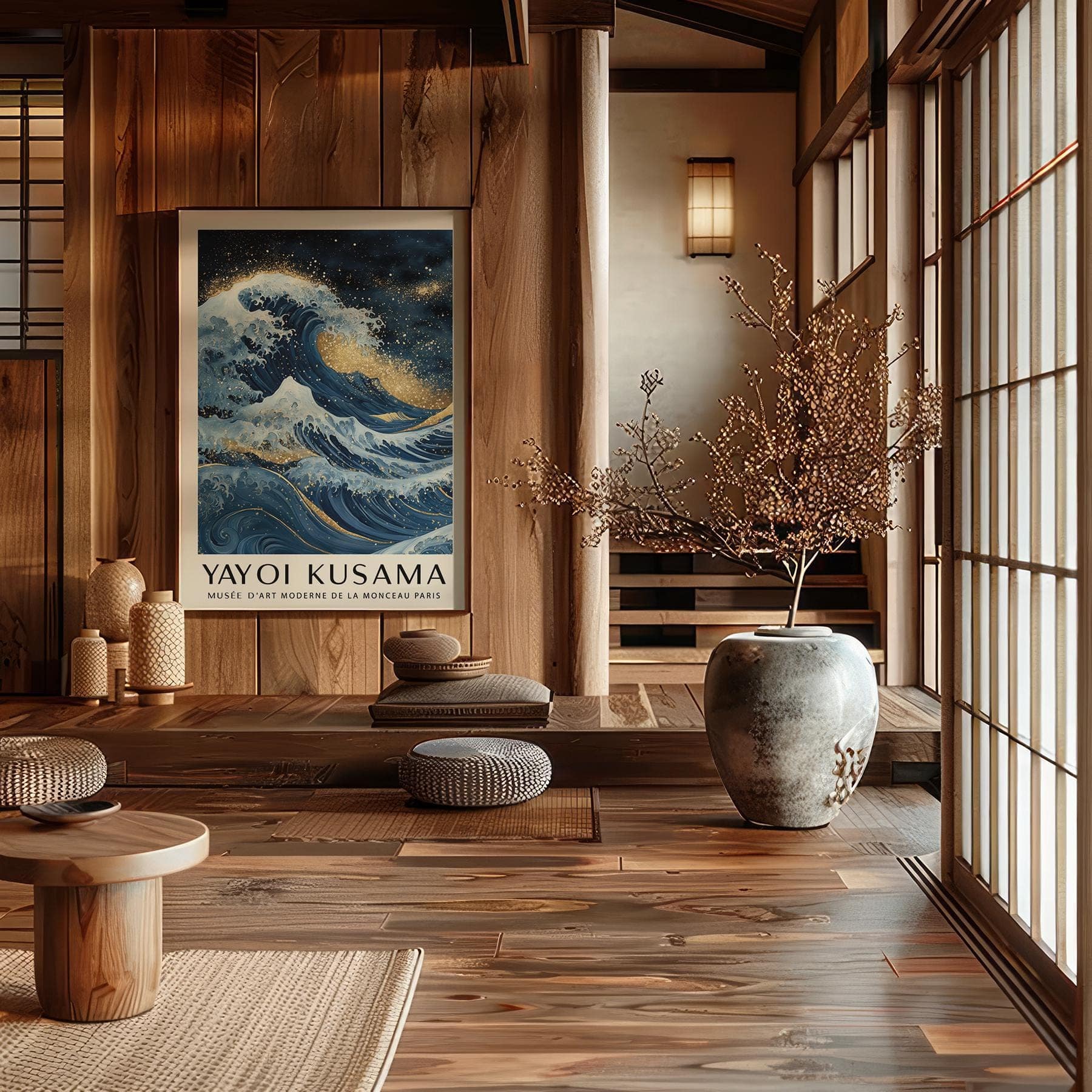Key Takeaways
-
Japanese pop art blends traditional aesthetics with modern cultural commentary, creating a unique and bold visual language.
-
Artists like Yayoi Kusama and Takashi Murakami have propelled Japanese pop art into global recognition.
-
This genre merges influences from Western pop art, Japanese folklore, manga, and contemporary consumerism.
-
Japanese pop art remains a powerful medium for exploring identity, technology, and societal change.
-
Laboo Studio offers stunning prints inspired by iconic Japanese pop artists, including a vibrant Yayoi Kusama Print.
What Is Japanese Pop Art?
Japanese pop art is a compelling art movement that mixes the vibrant, mass-culture-inspired themes of Western pop art with deeply rooted elements of Japanese tradition, anime, and consumerism. Often loud, whimsical, and rich in symbolism, Japanese pop art explores everything from personal identity to collective memory, with an aesthetic that’s unmistakably bold.
In Japan, pop art isn’t just visual—it’s cultural. It represents a dialogue between the old and new, East and West, restraint and excess. Whether it's the polka dots of Yayoi Kusama or the vivid anime motifs of Takashi Murakami, Japanese pop art has become a global force that continues to evolve.
Origins of Pop Art in Japan
While pop art gained traction in the West during the 1950s and 60s with artists like Andy Warhol and Roy Lichtenstein, Japan developed its own distinct pop aesthetic in the decades that followed. Heavily influenced by the country’s rapid post-war economic recovery, television culture, and a booming consumer market, artists in Japan began creating work that was both visually arresting and socially reflective.
Japanese artist pop art was not just about style—it was about substance. These artists responded to Japan’s growing relationship with globalization, technology, and cultural identity.
Yayoi Kusama: The High Priestess of Pop Dots
No conversation about japanese pop art would be complete without Yayoi Kusama. Known globally for her polka dots and immersive installations, Kusama's work reflects a blend of personal psychology and social commentary. Her use of dots, repetition, and vibrant color explores themes of infinity, self-obliteration, and mental health.
Kusama’s influence is so significant that she inspired one of our favorite pieces at Laboo Studio—the Yayoi Kusama Print. This colorful tribute captures the whimsy and introspection that make Kusama’s work so timeless.
For a deeper dive into her fascinating philosophy, check out our blog post: Yayoi Artist Kusama: What Do the Dots Mean?
Takashi Murakami and the Superflat Movement
Takashi Murakami, often dubbed the Warhol of Japan, revolutionized the genre with his "Superflat" theory. This concept flattens distinctions between high and low art, blurring the line between fine art and pop culture. Murakami’s work features anime-style characters, psychedelic flowers, and corporate logos, all wrapped in eye-popping color.
His creations critique commercialism, capitalism, and Japan’s obsession with cute (kawaii) culture—making him one of the most important japanese pop art artists today.
J Pop Art: Where Music and Visuals Collide
J pop art isn't confined to galleries—it permeates music, fashion, and media. From music videos with manga-inspired animations to album covers splashed with pop visuals, J-pop musicians often collaborate with contemporary artists to build immersive aesthetic identities. This fusion is a core part of what makes modern japanese pop art so dynamic and relevant.
Influences from Manga and Anime
The impact of manga and anime on pop art japanese creations cannot be overstated. Iconic characters like Astro Boy and Sailor Moon became symbolic figures, representing not only fictional universes but also cultural nostalgia and identity. Many modern japanese pop art prints incorporate these visual cues, creating a rich tapestry that resonates globally.
Artists take cues from the bold lines, exaggerated features, and emotional storytelling of anime to bring immediacy and relatability to their work.
Modern Japanese Pop Art Today
Modern japanese pop art continues to push boundaries, with artists experimenting across digital media, sculpture, and fashion. With the rise of NFTs and immersive exhibitions, the genre is gaining traction among younger audiences who crave both visual stimulation and meaningful commentary.
You’ll see japanese pop artists art on everything from sneakers to murals, signaling the continued blend of art and commerce.
Notable Japanese Pop Art Artists
1. Yayoi Kusama
A pioneer known for her polka-dot installations and mirror rooms.
2. Takashi Murakami
Famous for his anime-style artwork and Superflat theory.
3. Tadanori Yokoo
Combines psychedelic visuals with political messages and spiritual motifs.
4. Chiho Aoshima
Blends traditional Japanese art with fantasy landscapes and feminine motifs.
5. Mr. (Masakatsu Iwamoto)
Protégé of Murakami, known for provocative depictions of Japanese youth culture.
Japanese Pop Art in Interior Design
Japanese pop art isn’t just for museums—it makes a striking impact in home décor. Its vibrant colors, surreal motifs, and layered meanings add personality and boldness to modern interiors. At Laboo Studio, our curated prints channel this energy into stunning, display-ready artworks.
Whether you're decorating a minimalist loft or an eclectic studio, a pop art japan piece brings instant character and conversation.
The Message Behind the Color
Beyond the eye-catching visuals, japanese pop art is deeply reflective. It often critiques mass consumerism, identity loss in a digital age, and the pressure to conform. These works encourage viewers to question, laugh, and reflect—all while being wrapped in candy-colored chaos.
How to Style Japanese Pop Art at Home
-
Pair bold prints with neutral walls for maximum contrast
-
Combine with traditional Japanese elements like shoji screens or tatami mats
-
Use clusters of smaller prints to create a pop-art gallery wall
-
Add subtle lighting to highlight the texture and details
Explore the Yayoi Kusama Print in our collection for a perfect starting point.
Where to Start Your Collection
Looking to start your collection of japanese artist pop art? Here’s how:
-
Choose prints that reflect your personal connection or cultural interest
-
Look for signed or limited edition pieces when possible
-
Support contemporary artists who are innovating the genre
-
Check out Laboo Studio’s growing range of modern Japanese-inspired prints













































